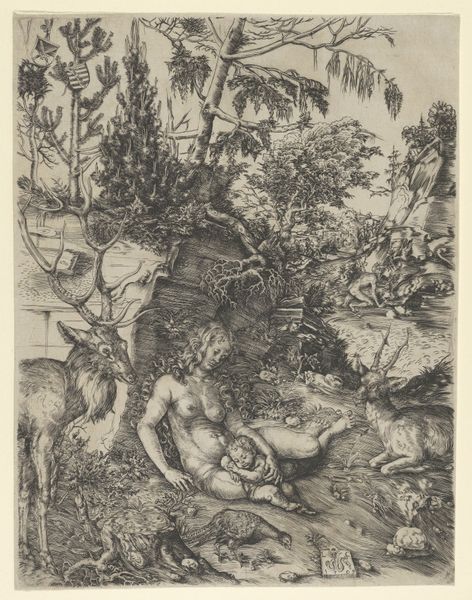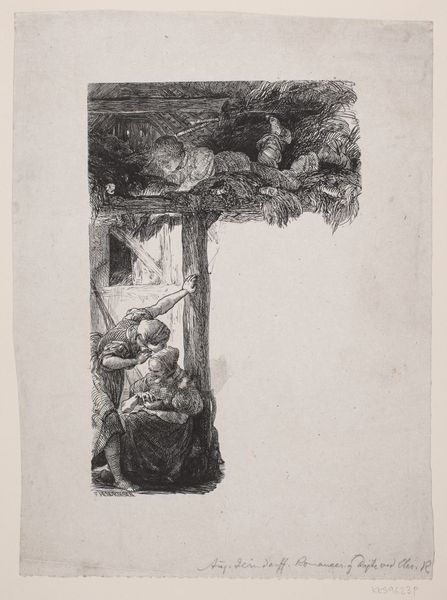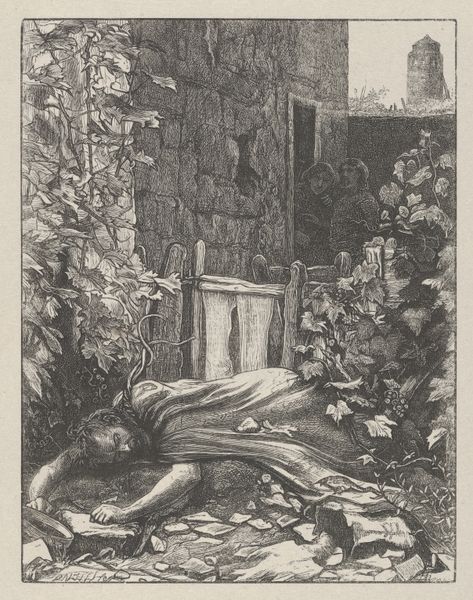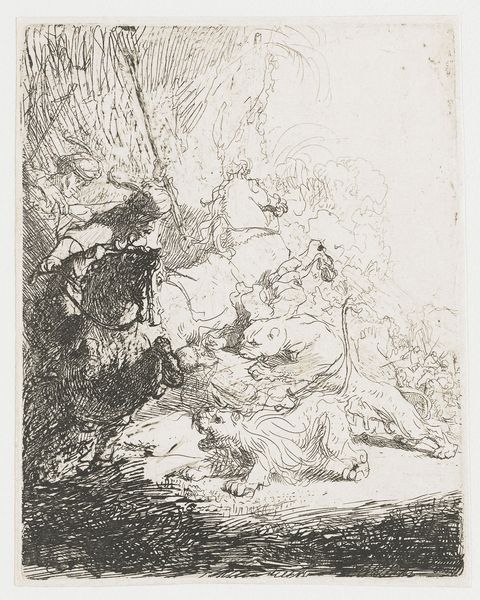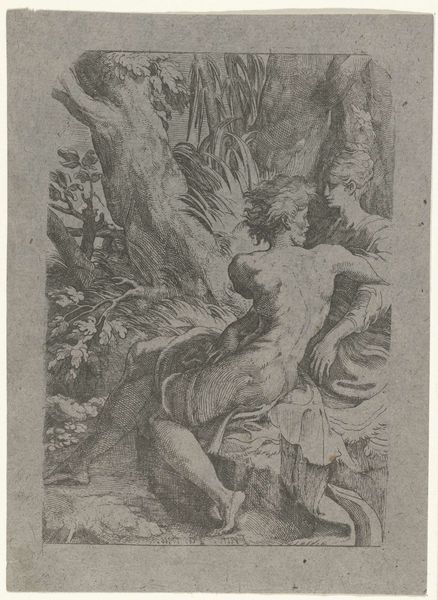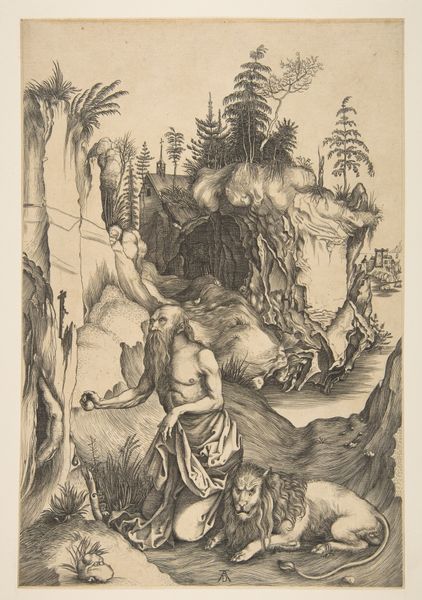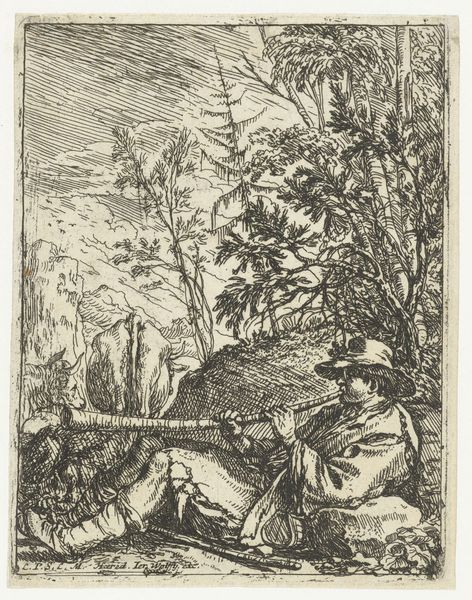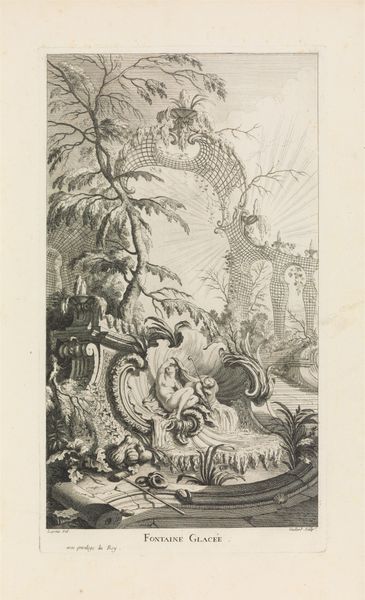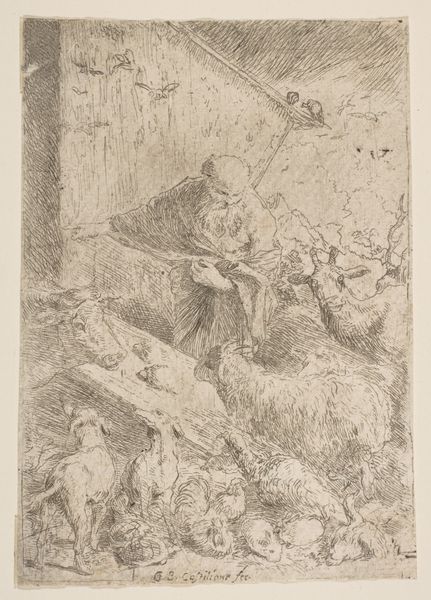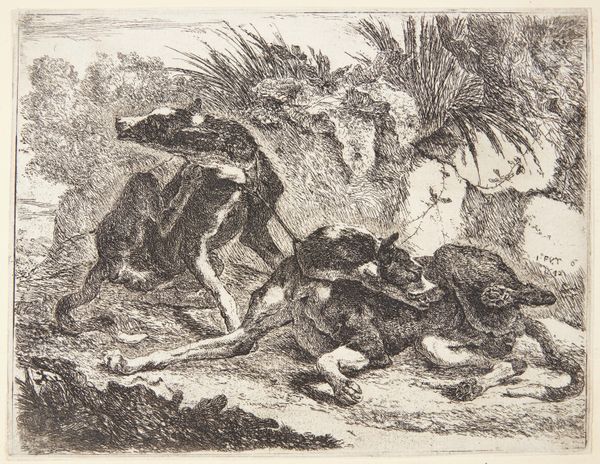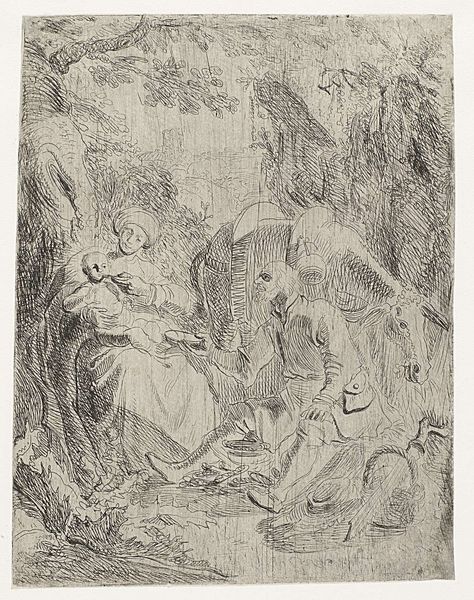
etching
#
baroque
#
animal
#
etching
#
dog
#
landscape
#
etching
#
sketchwork
Dimensions: height 208 mm, width 138 mm
Copyright: Rijks Museum: Open Domain
Paul Troger made this etching, "Donkey and dog at a ruined monument," sometime in the 18th century. Look closely, and you'll see that the image is made entirely of lines incised into a metal plate. The artist would have painstakingly drawn into a wax ground, then bathed the plate in acid, allowing it to bite into the exposed metal. The controlled corrosion is what gives the print its depth and texture. Troger’s skill is evident in the fineness of the lines, and their ability to capture the soft fur of the donkey, the rough fur of the dog and the crumbling stone of the ruin. Etching was a relatively democratic medium. It allowed for the reproduction of images on a mass scale, making art accessible to a wider audience. Yet, the labor-intensive process also reflects the pre-industrial era in which it was made. The artist’s hand is evident in every line, blurring the lines between craft and fine art.
Comments
No comments
Be the first to comment and join the conversation on the ultimate creative platform.
